Introduction
Cash flow problems can be detrimental to the health and longevity of a business. In today's economic landscape, with small businesses relying heavily on credit card usage and facing rising monthly payments, effectively managing cash flow has become even more critical. In this article, we explore common causes of cash flow problems and provide practical strategies for CFOs to navigate these challenges.
From poor financial planning and declining sales to late payments and inadequate marketing strategies, we discuss the various factors that can impact cash flow. By understanding these challenges and implementing effective cash flow management techniques, CFOs can ensure their businesses not only survive but thrive in today's competitive marketplace.
Common Causes of Cash Flow Problems
The importance of cash flow in small enterprises cannot be overstated, similar to the life-sustaining flow of blood through the body. The capacity to handle incoming and outgoing funds effectively is a crucial factor in the health and longevity of an organization. In the current economic landscape, many small businesses have found themselves heavily reliant on credit card usage, with a reported average increase in spending of 20% post-pandemic. This surge in credit usage is accompanied by a notable 26% increase in the monthly payments needed, which includes interest—adding strain to an already fragile balance of funds.
To navigate these turbulent monetary waters, it's crucial to comprehend and utilize an income statement. This document provides a clear view of where money originates and where it is allocated, enabling organizations to strategize effectively. Whether it's purchasing inventory, managing operational costs, or compensating employees, the proper oversight of cash flow is paramount.
Professor Ufuk Akcigit, in partnership with Intuit, has emphasized the significance of these economic obstacles facing small enterprises throughout significant areas. With over 400 million small enterprises globally and 33.2 million in the United States alone as of early 2024, the economic impact of these establishments is undeniable. Nevertheless, the statistic that only a quarter of small enterprises endure beyond 15 years underscores the vital importance of fiscal expertise, especially in the realm of cash management.
Experts recommend that comprehending gross margin, which is defined as revenue minus the cost of goods sold, is crucial for success in commerce. A monthly review and analysis of monetary statements, with a focus on maximizing gross margins, can provide the strategic direction needed for long-term viability. Moreover, for those enterprises facing a seasonal decline, the 2022 Small Business Credit Survey reveals that 42% of firms with employees have employed loans to tackle economic difficulties, highlighting the necessity for prudence and a well-defined repayment strategy to prevent the dangerous cycle of indebtedness.
Incorporating these insights into a comprehensive monetary plan can help small businesses fortify their money stream, ensuring that they are not only surviving but thriving in today's competitive marketplace.
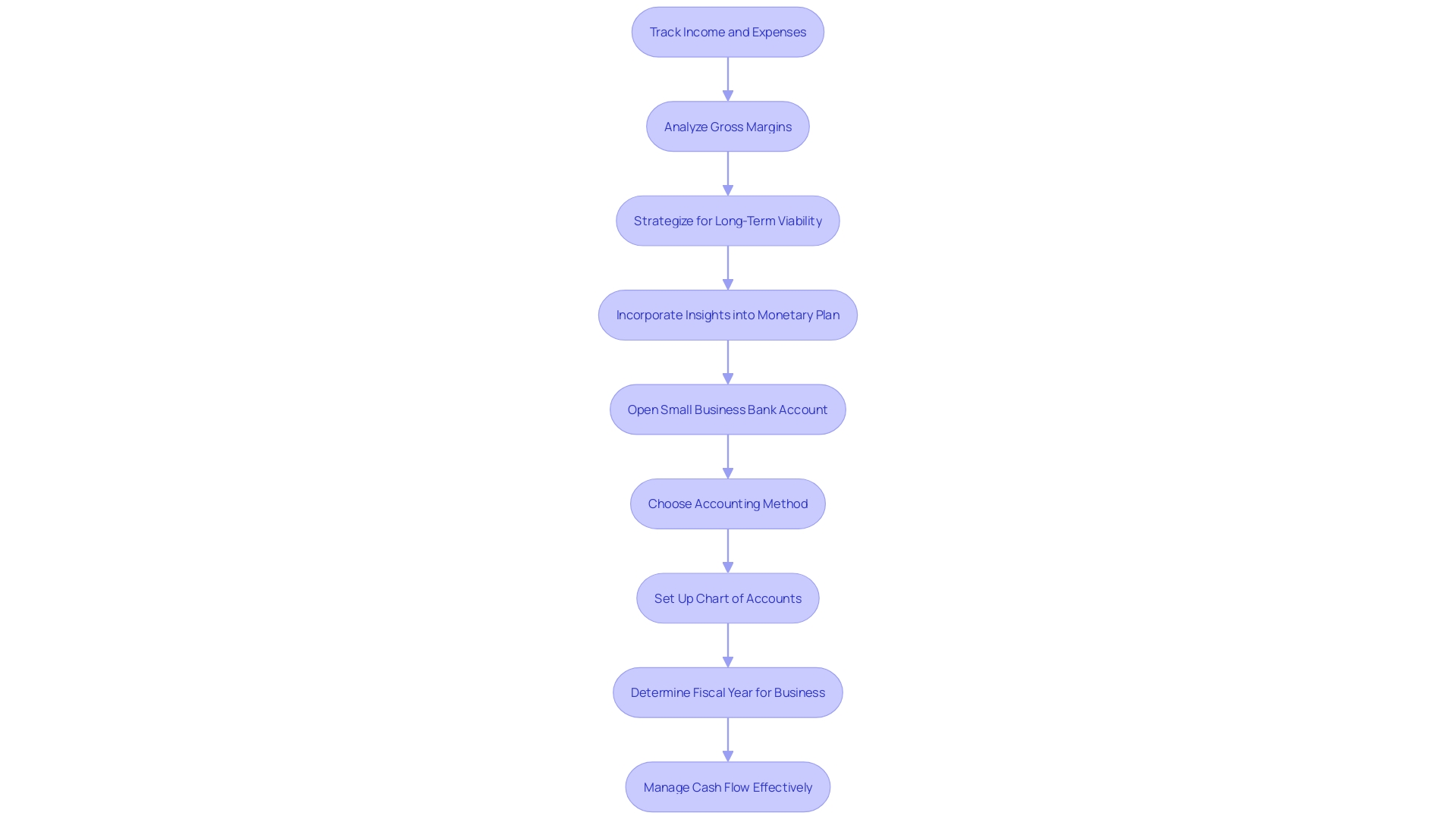
Poor Financial Planning and Lack of Cash Reserves
Insufficient planning is a main cause in creating monetary stream predicaments for companies. Failing to predict and regulate expenses with precision can lead to a shortage of funds necessary for fulfilling financial commitments. A company's survival depends not only on profits reflected on the income statement, but also on maintaining a robust liquidity position, as emphasized by the differing outcomes of Credit Corp and Collection House. Although both companies reported profits, their statements on liquidity revealed contrasting narratives, with Credit Corp thriving due to its robust generation capabilities despite the challenges posed by the pandemic.
Moreover, a statement of funds movement is an essential tool for businesses. It offers a clear picture of where the money comes from and where it goes. Dr. Sharon H. Porter emphasizes the importance of leaders being intimately familiar with their company's financial statements to make informed decisions for future success. As stated by Porter, understanding your figures and developing a strategic blueprint for fund allocation are vital for efficient management of financial resources.
In addition, James Mohs, an associate professor at Pompea College of Business, emphasizes the significance of acknowledging when a company can no longer sustain itself, proposing that bankruptcy should be considered only after all other alternatives have been depleted. He suggests exploring other options such as refinancing, issuing stock, or considering mergers before taking such an important action, highlighting the importance of prudent monetary planning and timely decision-making to prevent liquidity problems.
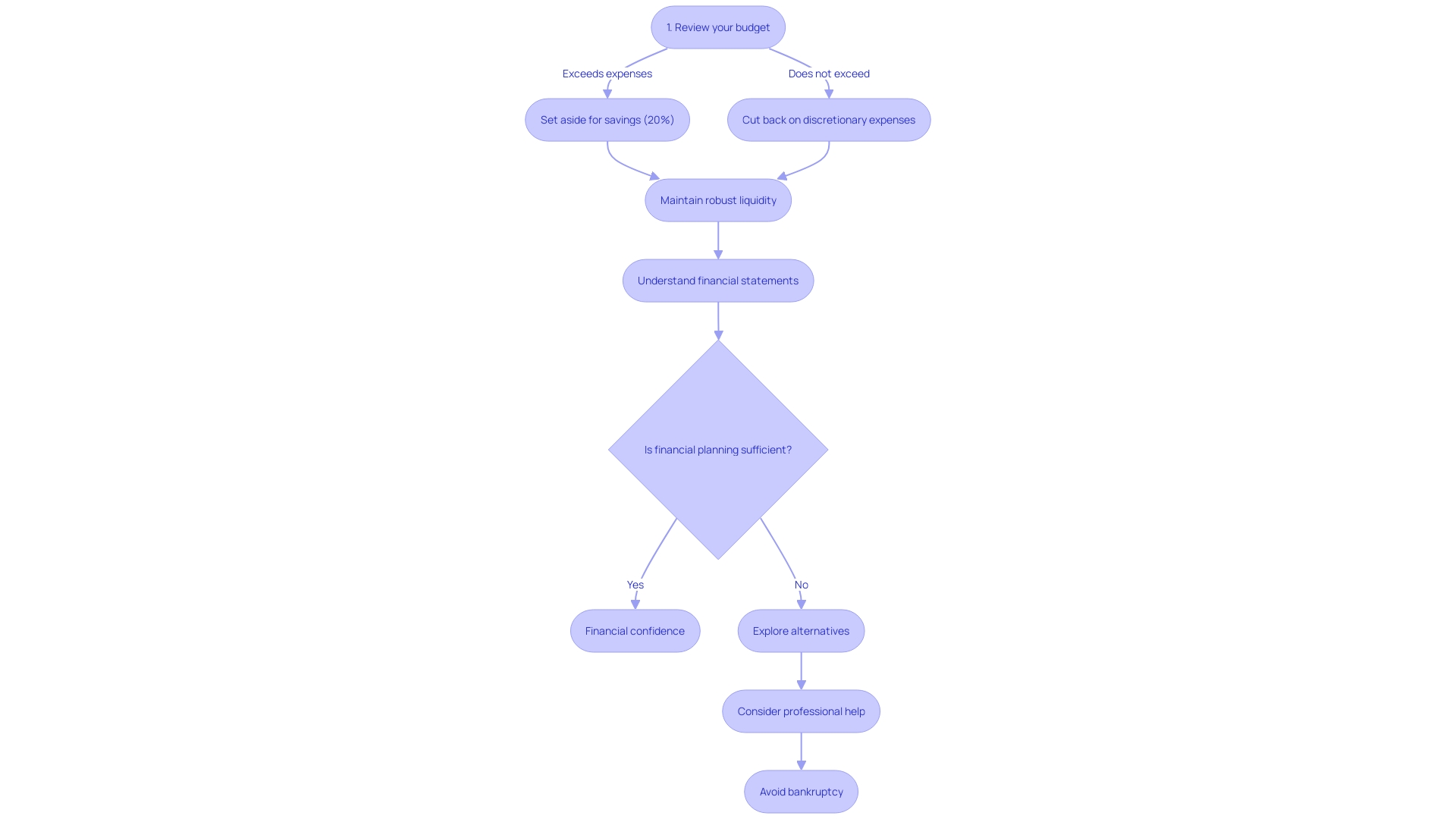
Declining Sales or Profit Margins
Maintaining a watchful eye on sales and profit margins is crucial for sustaining a healthy cash flow in an enterprise. Slight downturns in revenue or shrinking margins can quickly escalate to financial strain, making it imperative for companies to not only monitor these metrics but also to understand and react to the factors influencing them. Insightful management involves identifying trends such as reduced customer engagement or competitive shifts, which might signal an impending sales slump. Proactive measures, supported by comprehensive analysis of sales data and customer feedback, can then be implemented to guide the enterprise back on track. Companies that adopt a structured sales process, which typically includes stages like prospecting, qualifying leads, and post-sale follow-up, have been shown to boost revenue growth by up to 28%. In addition, emphasizing value maximization instead of solely focusing on profit, as suggested by specialists, motivates enterprises to allocate resources towards long-term expansion, even if it entails accepting reduced profits or temporary losses. In summary, sustainable enterprise success hinges on regular monitoring, a deep understanding of customer needs, and strategic decision-making aimed at maximizing value over time.
Consistent Late Payments and Inflexible Funding Facilities
Late payments from clients can have a ripple effect on a company's cash flow ecosystem, causing significant cash flow challenges. The statistics show that in the UK, approximately 26% of payments were late in 2023, according to the Chartered Institutes of Procurement & Supply. This is only a marginal improvement from the 31% reported in 2018. With large enterprises averaging 36 days to settle invoices, the persistent issue of late payments has been only minimally addressed over the past five years.
To avoid the negative impacts on financial obligations, enterprises are progressively resorting to financing options such as invoice financing and receivables financing. These options are gaining popularity as conventional credit lines become more difficult to obtain, and banks tighten lending requirements for small and medium-sized enterprises (SMEs). The process of securing such financing is streamlined when businesses have their documentation in order, such as business formation documents, which can determine eligibility in a matter of minutes.
The significance of comprehending and handling the movement of funds is emphasized by Dr. Sharon H. Porter who recommends a comprehensive examination of financial statements to grasp the complete image of a company's fiscal health. Furthermore, it's critical to have a strategic plan for allocating funds that includes a system for tracking and measuring accounts payable and receivable. This strategic planning is crucial as it directly affects the company's ability to effectively manage its financial resources and make well-informed investment decisions that generate profits.
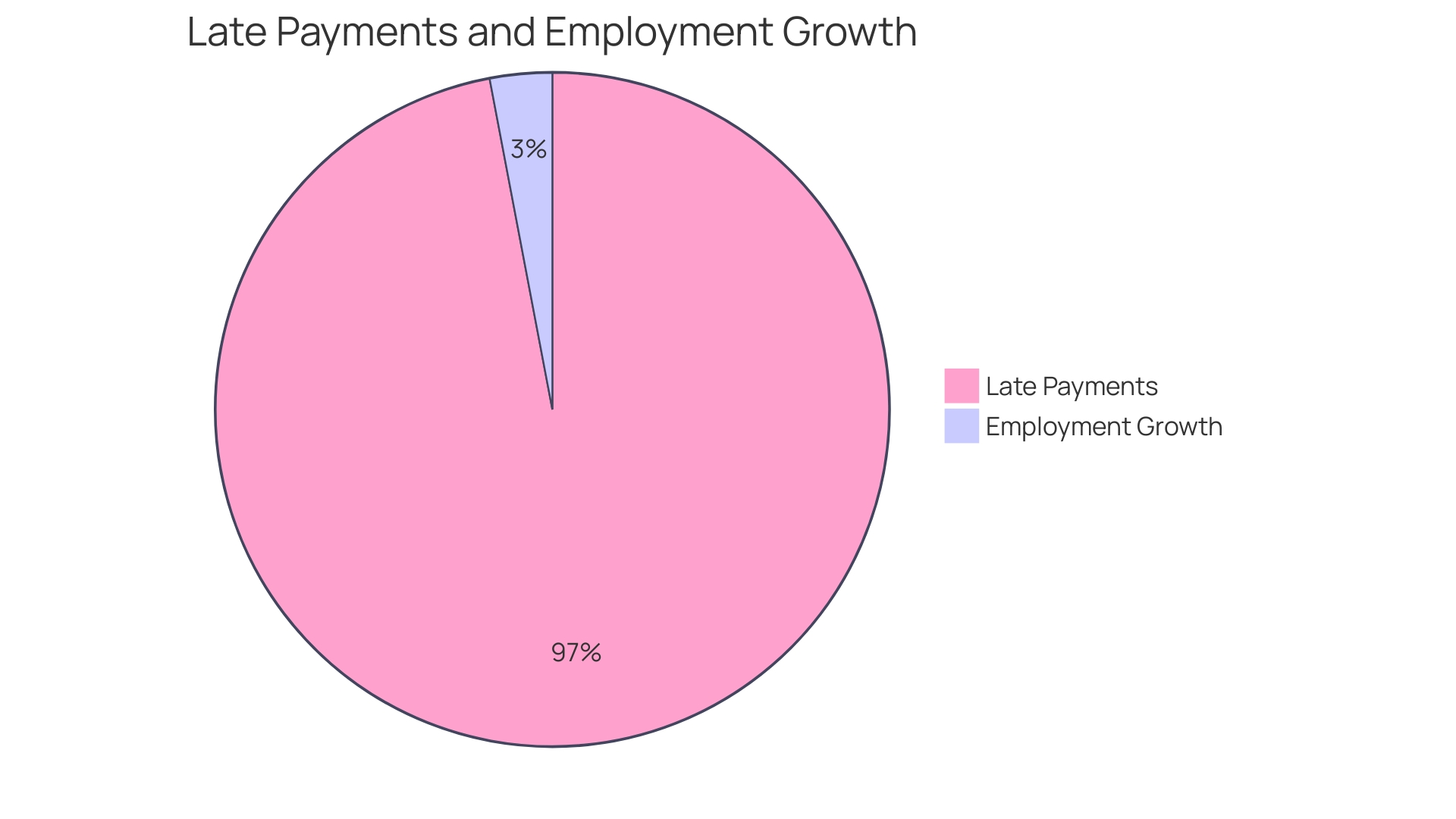
Poor Inventory Management and Seasonal Variations
The challenge of inventory management strikes a delicate balance between having too much, which can absorb essential capital, and too little, which can cause cash flow bottlenecks due to unmet demand. A well-tuned inventory system can prevent overstocking and understocking, both of which are detrimental to financial health. Seasonal demand shifts also play a critical role in inventory management. For example, consider Cycle Néron, a company that witnessed its inventory complexities magnify with growth and market changes, including the introduction of electric bikes.
Metro Supply Chain's recent study underscores this conundrum, revealing that 61% of UK retailers are grappling with surplus stock, attributing it to decreased consumer spending. This is not a trivial matter, as excess inventory incurs substantial costs for storage and management. The clothing sector, at 76%, and the food and beverage industry, at 53%, are acutely affected.
To mitigate surplus inventory, liquidation is a common approach, converting stagnant stock into liquid assets. While demand forecasting is crucial for inventory control, it's not foolproof and can result in surplus or deficits. A case in point is the clothing industry, where previous seasons' trends may render stock obsolete within mere months.
To encapsulate this operational necessity, Chong Hua Hospital in Cebu City emphasizes the importance of 'putting it in writing,' which enhances understanding and efficiency in materials management—a principle that can be extrapolated to inventory management. Furthermore, the requirement for additional advanced storage solutions and the incorporation of technology and AI into operations, as stated by 55% of enterprises in the research, demonstrates the sector's drive towards more advanced inventory control systems.
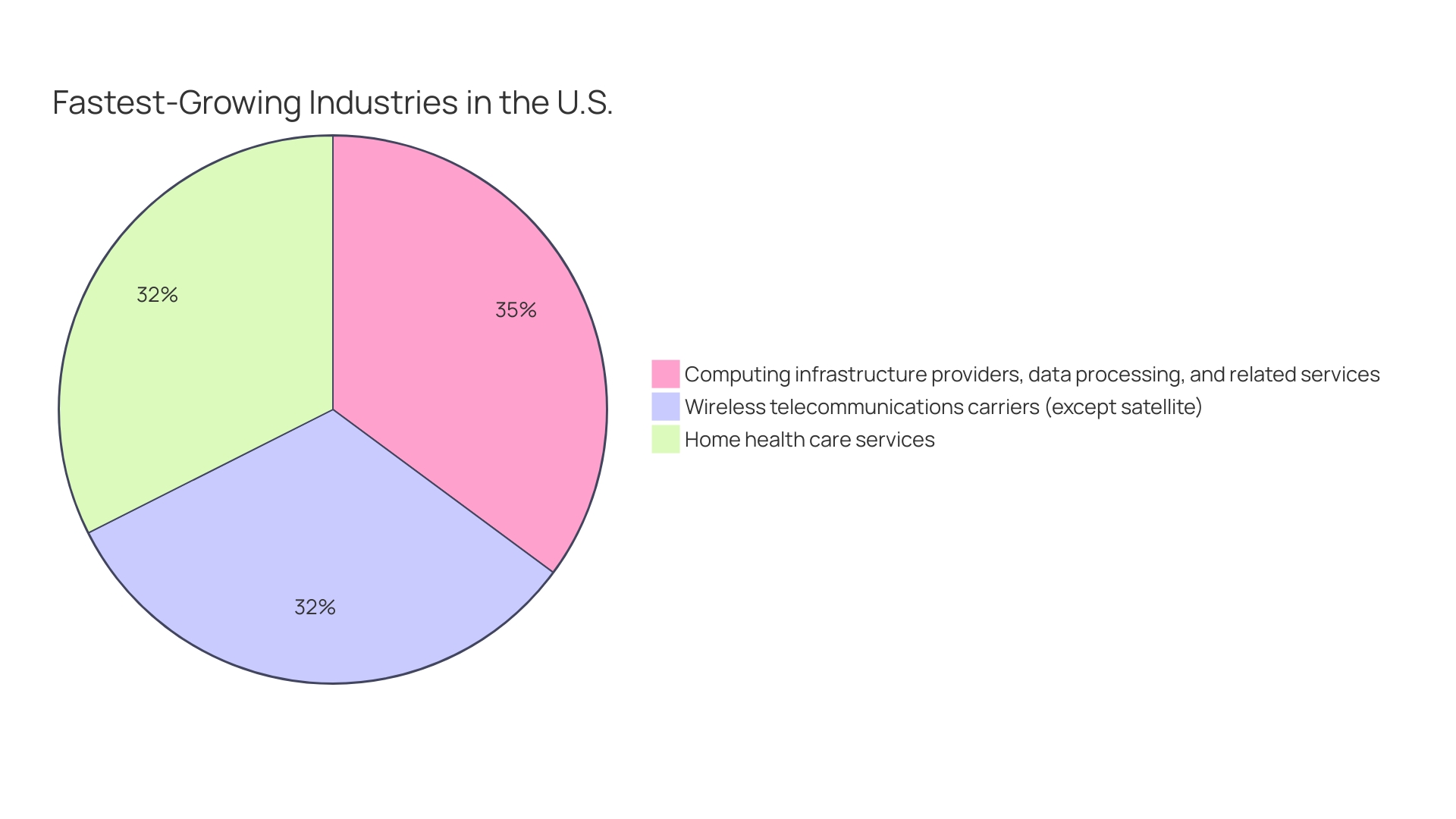
Rapid Growth Without Adequate Capital
Expanding an enterprise necessitates a delicate equilibrium between expansion and financial stability. As a vivid example, the Kodak saga demonstrates the perils of overlooking the impact of rapid changes and growth on a company's sustainability. The company's failure underscores the need for strategic planning in the face of exponential changes, a lesson that applies to all companies that must adapt and scale responsibly.
Similarly, the success story of Tech Ladies illustrates a contrasting outcome. Starting as a modest meetup, Tech Ladies achieved impressive growth, evolving into a community of 200,000 members before being acquired. This victory was achievable because of the founder's dedicated commitment and a strong operational framework that backed the organization's efforts to expand. The journey of Tech Ladies from inception to acquisition is a testament to the importance of aligning growth strategies with adequate resources and funding.
The essential resource for a company, the movement of funds, determines its capacity to function efficiently, compensate workers, acquire resources, and engage in new projects. Equating cash flow with profit is a common misunderstanding; however, they are not synonymous. Cash flow is about the actual movement of cash in and out of the company, whereas profit represents the residual financial gain post expenses.
The limitations of expanding a research organization are equally relevant to enterprises in general. These constraints, often related to talent, funding, and other operational gaps, must be identified and managed to facilitate growth. Moreover, startup funding is a critical hurdle for entrepreneurs, with numerous avenues available for those who seek them out.
In the wider framework, enterprises should give priority to value optimization rather than profit optimization, as this influences every aspect of corporate finance. While some established companies may find profit and value maximization to converge, most enterprises, particularly those with growth potential, may opt for reduced profits or even losses in the short term to foster long-term growth. This approach is evident in many modern companies, particularly in the tech and green energy sectors, which emphasize scaling and growth, sometimes at the expense of solidifying their models and profitability.
Bain research highlights the rise of 'unicorns,' startups valued at over $1 billion. However, only a small number of these unicorns are generating cash from operations at scale, highlighting the scarcity of enterprises that can maintain growth without ongoing venture capital support. Ultimately, the objective is to achieve a balance that enables a company to grow while maintaining economic well-being, a challenge that highlights the significance of planning and securing adequate funding for growth strategies.
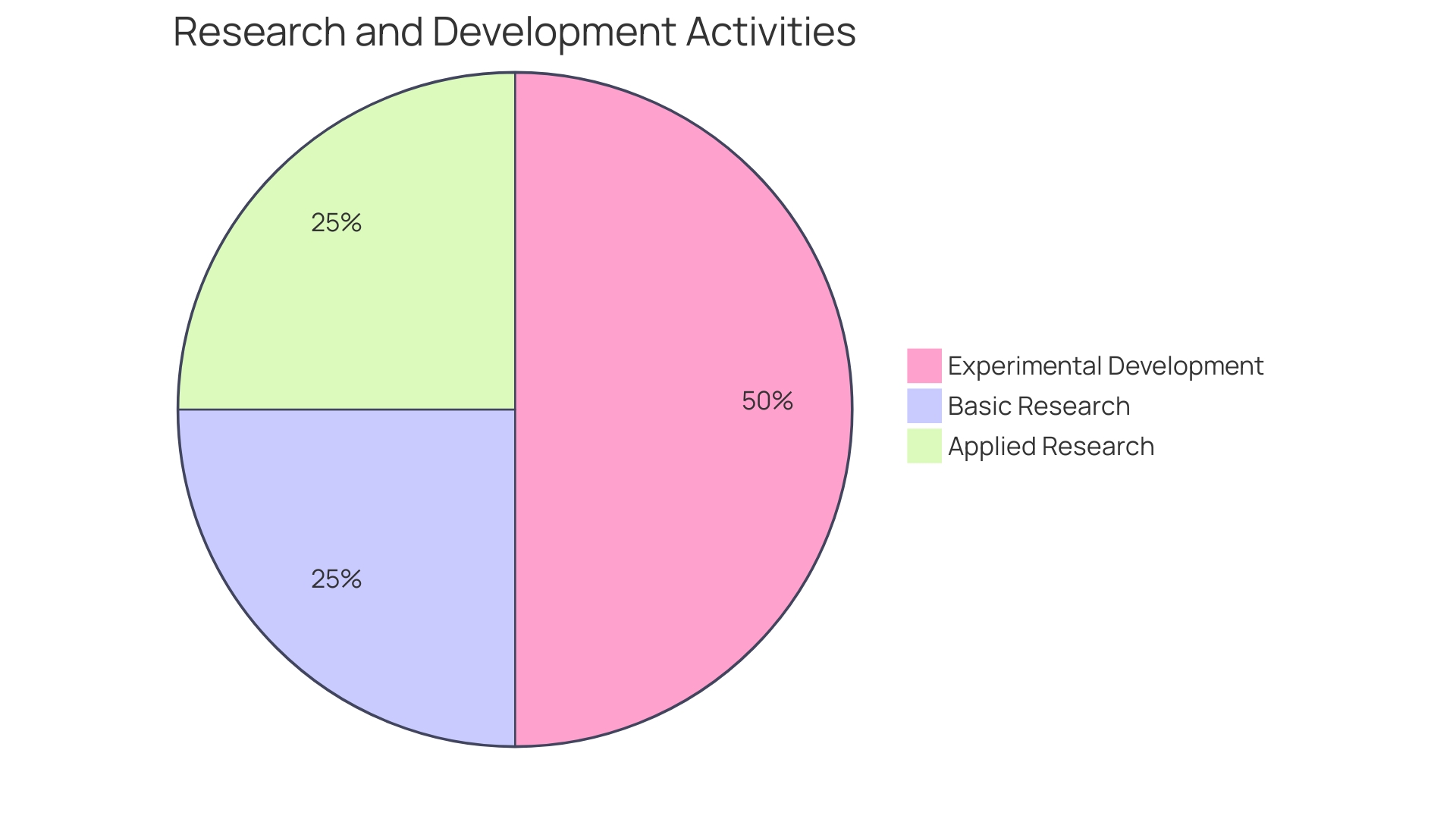
Limited Customer Base and Inadequate Marketing Strategies
A strong customer base and effective marketing are crucial in creating consistent revenue streams for enterprises. Changing sales can result in financial uncertainty, particularly for the 33.2 million small enterprises in the United States. Strategies that both draw in new customers and ensure their loyalty are crucial for a stable cash flow. One compelling example of this is a city-center hotel that revitalized its restaurant sales by leveraging its prime location and understanding its market, a strategy underscored by industry expert John Young. Likewise, small enterprises can design successful marketing strategies even with limited financial resources. Initiatives like The Milton Scene Business Membership offer affordable marketing options that can help local enterprises flourish. In a field where only 25% of small enterprises endure past 15 years, the significance of establishing achievable objectives, as emphasized by Dréa Hudson from HubSpot, cannot be overstated. By establishing specific, quantifiable goals and an innovative strategy for allocating resources, small enterprises can strengthen their market presence and client contentment, thus bolstering their economic well-being.
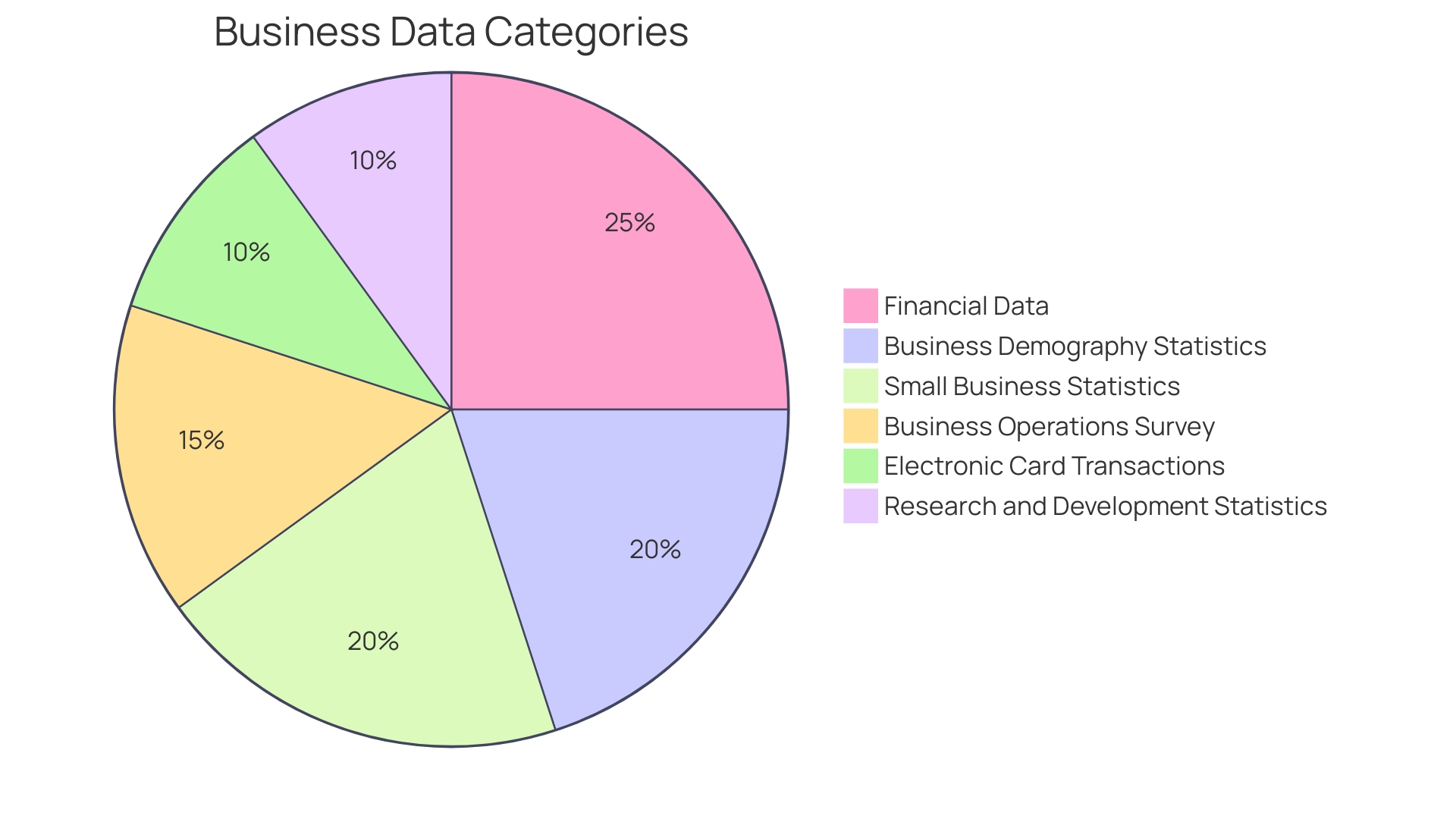
Strategies for Effective Cash Flow Management
To manage the intricacies of monetary movement and strengthen the financial well-being of an enterprise, a variety of tactics must be utilized. Understanding the fundamental principles of managing financial resources is crucial; it entails a thorough monitoring of money received and spent in order to guarantee that a company can fulfill its present and future commitments, capture chances for expansion, and sustain its overall financial health.
The foundation of perceptive money movement control is a comprehensive comprehension of the money movement report. This crucial document outlines the inflows and outflows of funds, offering insights into the operational, investing, and financing activities of a company. Differentiating between monetary inputs, which signify the assured and instantaneous funds entering the establishment, and monetary outputs, which encompass expenditures, is crucial for sustaining consistent financial liquidity.
Dr. Sharon H. Porter emphasizes the importance of comprehensively reviewing all financial statements to gain a holistic view of the company's financial performance. This enables smarter fund allocation, including investments that yield returns. Additionally, being in tune with your company's current financial situation and patterns assists in predicting and maintaining steady growth.
To improve the management of funds, begin by organizing all sources of income and analyzing expenses, which include both fixed and variable costs. A budget that also factors in unexpected expenditures, future investments, and an emergency fund is vital. Regular reviews of the budget ensure alignment with business operations and financial objectives.
Furthermore, Corporations have been obligated to present a statement of monetary movement since 1987. The intention of the statement is to reveal information about the events that impacted money during an accounting period. The statement examines the variations in the levels of money directly, removing numerous of the flaws with the conventional calculation of funds.
Finally, it is vital to keep in mind that the movement of money is the essential element of any small enterprise, as it permits you to handle necessary costs such as buying inventory, covering overheads, and paying employee salaries. Monitoring the movement of funds can act as a sign of your company's fiscal well-being, directing you towards a trajectory of profit and sustained achievement.
Forecasting and Regular Financial Review
Thorough forecasting of finances, combined with regular examination of statements, is a foundation for anticipating flow predicaments. This process involves not just a review of historical economic activities but also a strategic analysis of market dynamics. Such due diligence aids in forecasting potential cash shortages, thereby allowing companies to take decisive actions to prevent them. A common trap for small enterprises is in insufficient money management practices such as disregarding monthly bank reconciliations, postponing invoicing, or neglecting the tracking of accounts receivable. These oversights can result in discrepancies between the balance sheet and the income statement, often leaving owners surprised at the gravity of the situation when it's brought to light. To illustrate, SmartRent's recent misclassification of funds paid for software expenses highlights the complexity of money movement statements and the importance of meticulous accounting. To guarantee the precision of reports, and as underscored by the Sec's top bookkeeper, it's essential for companies to uphold a meticulous approach to the creation, assessment, and examination of monetary stream declarations. This attention to detail is not just about compliance but is instrumental in providing investors with high-quality economic information. By embracing a forward-thinking attitude and incorporating cutting-edge projection techniques, enterprises can stay ahead of monetary challenges and sustain a robust economic foundation.

Categorizing and Benchmarking Expenses
Efficient fiscal projection and cost optimization are vital for sustaining strong cash flow and guaranteeing the sustainable growth of an enterprise. To accomplish this, enterprises must consistently monitor their expenses and compare them against established benchmarks within their sector. This process allows for the identification of potential overspending, enabling companies to make strategic decisions to curtail unnecessary costs.
For instance, grasping the materiality of expenses—whether they are significant or minor in the context of the statements—is essential. Items with a short lifespan or high cost can dramatically impact the monthly profit and loss statement, necessitating a nuanced approach to expense categorization. Businesses must judiciously determine whether to record expenses directly to the profit and loss statement or initially to the balance sheet, where they can be amortized over time.
Compiling and analyzing historical data is also fundamental. By examining at least three years of records, such as sales, expenses, and profit margins, businesses can establish a strong basis for projections. This historical perspective uncovers patterns, seasonal variances, and long-term trends that inform future monetary planning.
Furthermore, grasping the various streams of revenue, from product sales to service fees, gives a comprehensive view of an organization's economic well-being. It facilitates more precise forecasting and aids enterprises in anticipating future revenue streams.
Data analysis, which includes sales, purchases, and operating profits across industries, is crucial in making informed decisions and shaping policies, according to statistics. By staying attuned to these economic metrics, companies can benchmark their performance against industry-wide data, gaining insights into their competitive standing and potential areas for improvement.
Micromanaging Spending and Managing Cash Flow Peaks and Troughs
Efficient cash flow control is crucial for sustaining the economic well-being and steadiness of an organization. By tracking the money that an organization receives and comparing it against its expenditures, companies can ensure they have enough liquidity to meet immediate and future obligations. A key strategy in this process is meticulous monitoring of spending, where strict controls are put in place to scrutinize each expense and assess its necessity. For instance, a restaurant and retail chain such as Cracker Barrel, with more than 650 locations, optimized their reconciliations by shifting from manual processes to a virtual card system, resulting in considerable productivity savings and reduced overhead expenses.
To navigate through the cyclical aspect of commerce, organizations should also plan for monetary flow fluctuations. This involves building cash reserves during profitable periods to buffer against potential money shortfalls. As unexpected costs and project delays can arise—such as CEO pet projects or market surprises—setting aside a budget for unforeseen expenses is a wise move.
In addition, maintaining a detailed and up-to-date budget that encompasses all income sources and fixed and variable expenses is crucial. This budget should also include provisions for savings and an emergency fund to cover those 'rainy days.' Regular evaluations and revisions to the budget will keep it applicable to modifications in operational and economic goals.
It's vital for leaders to thoroughly examine all monetary records to gain a comprehensive understanding of the organization's performance. Dr. Sharon H. Porter emphasizes the importance of knowing your numbers, as this knowledge is crucial to the future success of your enterprise. This understanding aids in making informed decisions about fund allocation, including investments that will yield a return. In the end, through embracing a structured strategy to monetary movement management, organizations can set themselves up for success and evade the typical obstacles that result in economic pressure.

Managing Vendor and Customer Payment Terms
Strategic negotiation of payment terms with suppliers and clients is a key element in managing a company's cash flow, which is tantamount to the lifeblood of the organization. By arranging extended payment terms with suppliers, companies gain the flexibility to align outflows with their revenue generation cycles. On the other hand, offering incentives for early payments from clients can significantly reduce the average collection period, thus enhancing liquidity.
Moreover, incorporating a total cost of ownership analysis into negotiations allows a business to account for both the tangible and intangible aspects of procurement, such as implementation fees, maintenance, and unforeseen management costs. This comprehensive perspective can result in more sustainable planning.
Implementing a cohesive payment system, like Stripe, can enhance the payment process even more, guaranteeing that all payment-related tasks revolve around customer convenience while offering transparent visibility into billing and tax details, which are essential for effectively managing financial resources.
To optimize negotiation outcomes, it's advisable to follow a structured approach that involves identifying contract variables, understanding the priorities of each party, and collaborating to devise solutions that cater to the capital optimization needs of both. For example, variables such as the price per hour, total guaranteed hours, and payment terms can be negotiated to meet the monetary goals of the involved parties.
In the domain of monetary stream management, one must not only concentrate on current status but also utilize past data to predict and make knowledgeable choices for future economic well-being. A data-driven negotiation strategy, backed by metrics such as service issue frequency and usage history, can safeguard against vendor risks and ensure favorable terms that support the company's objectives.
Building Cash Reserves and Accessing Flexible Funding Solutions
For small enterprises, maintaining sufficient liquidity is the cornerstone for financial strength. By diligently allocating a percentage of earnings, companies can fortify themselves against unanticipated expenses and fluctuations in cash flow. This strategic approach to savings not only acts as a buffer but also enables organizational agility in response to market changes. To enhance these reserves, flexible financial instruments like lines of credit or invoice financing can empower enterprises with the liquidity needed to overcome short-term financial hurdles. Nicholas Rathwell, a partner at Capital BBQ and BBQing.com, underscores the importance of robust e-commerce strategies for revenue diversification, which can be pivotal in building and preserving cash reserves. As the digital economy expands, the transaction value in digital finance has experienced a significant rise, showcasing the transition towards more online commercial activities. Moreover, comprehending the distinct prerequisites of diverse funding categories, ranging from loans for enterprises to venture capital, and drafting robust plans and statements are vital stages for a seamless funding application procedure. This comprehensive financial preparedness is essential for small businesses aiming to achieve long-term success and stability.
Conclusion
In conclusion, effective cash flow management is crucial for the financial health and longevity of a business. By understanding common causes of cash flow problems and implementing practical strategies, CFOs can navigate these challenges and ensure their businesses thrive in today's competitive marketplace.
To manage cash flow effectively, CFOs should regularly review financial statements and create a detailed budget that factors in unexpected expenses and savings. Maximizing gross margins, monitoring sales and profit margins, and focusing on value maximization over profit alone are essential strategies.
Late payments from clients can be mitigated by utilizing financing solutions like invoice financing. Managing inventory effectively, adapting to seasonal variations, and considering liquidation to mitigate surplus stock are key.
Rapid growth must be accompanied by adequate capital and strategic planning. Prioritizing value maximization and setting attainable goals are crucial. Limited customer base and inadequate marketing strategies can be addressed by attracting new customers and crafting effective marketing plans.
To enhance cash flow management, CFOs should understand the cash flow statement and negotiate payment terms with vendors and customers. Meticulous financial forecasting, categorizing and benchmarking expenses, and managing cash flow peaks and troughs are essential.
Building cash reserves and accessing flexible funding solutions are vital for financial stability. Diligently allocating a percentage of earnings and utilizing versatile financial instruments can fortify businesses against unforeseen expenses.
In summary, by implementing these strategies and adopting a proactive approach to cash flow management, CFOs can ensure the financial health and longevity of their businesses. Cash flow management is the lifeblood of any business, guiding decision-making and paving the way for long-term success.




